1. Icefish
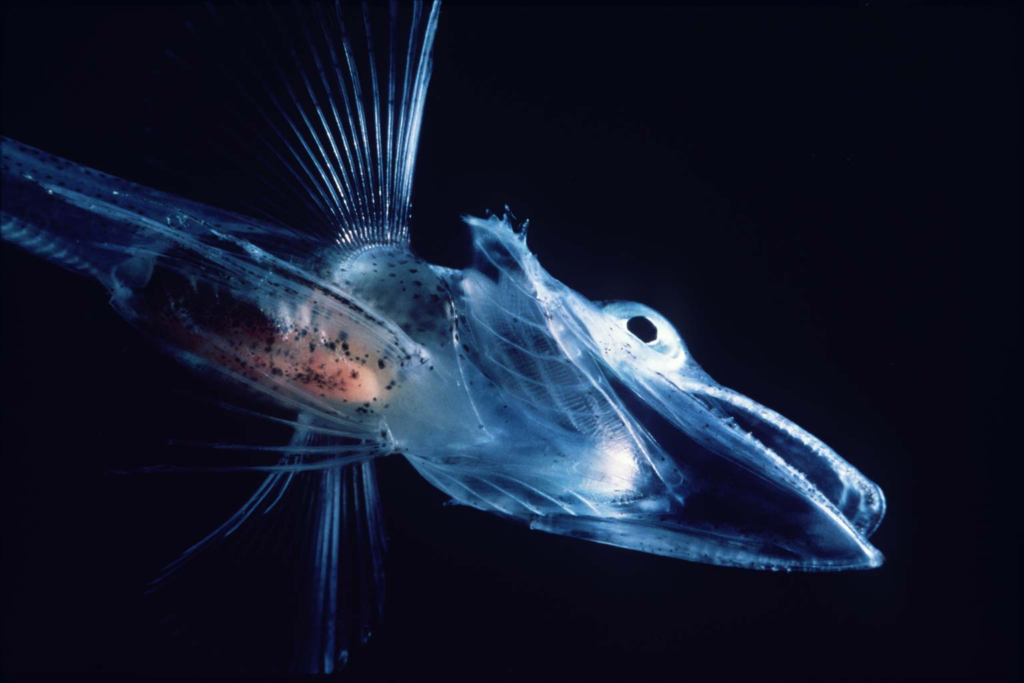
Wikimedia Commons
The icefish, native to the waters around Antarctica, is a creature that has adapted to the freezing temperatures of the deep sea. It is unique in that it lacks hemoglobin, the molecule that carries oxygen in most animals’ blood. Instead, icefish rely on the cold water to keep oxygen dissolved, absorbing it directly through their blood vessels. This strange adaptation allows the icefish to thrive in an environment where most other creatures would freeze to death. Its transparent blood, which appears pale, gives it an eerie, ghostly appearance.
2. Fangtooth Fish
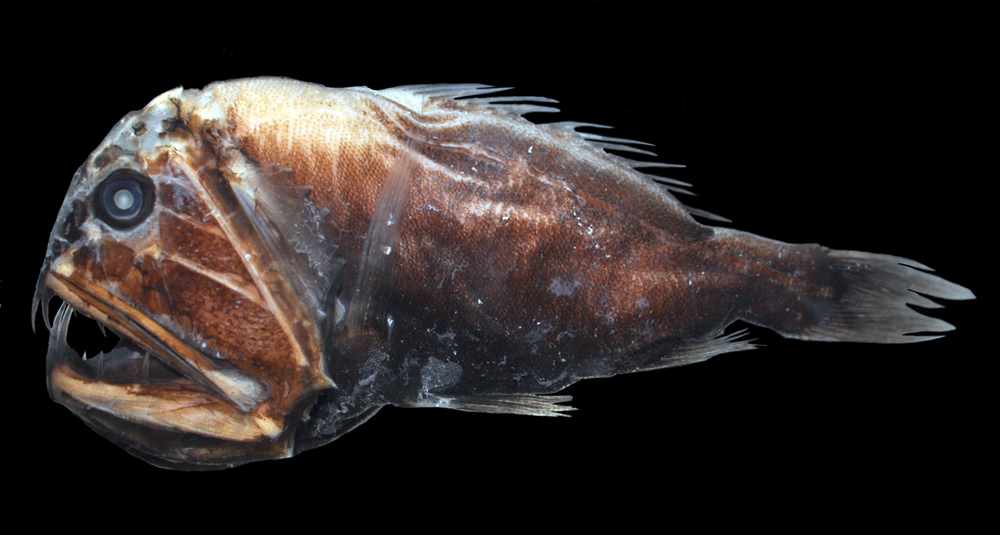
Wikimedia Commons
The fangtooth fish is a menacing-looking creature with sharp, needle-like teeth that make it appear more like a monster than a fish. It lives at depths of over 16,000 feet, where the ocean is dark and cold. Despite its fearsome appearance, the fangtooth is actually a relatively small fish, measuring only about 6 inches long. It hunts small fish and invertebrates, using its oversized teeth to trap its prey. The fangtooth’s large teeth are perfectly suited for life in the deep sea, where competition for food is fierce.
3. Vampire Squid
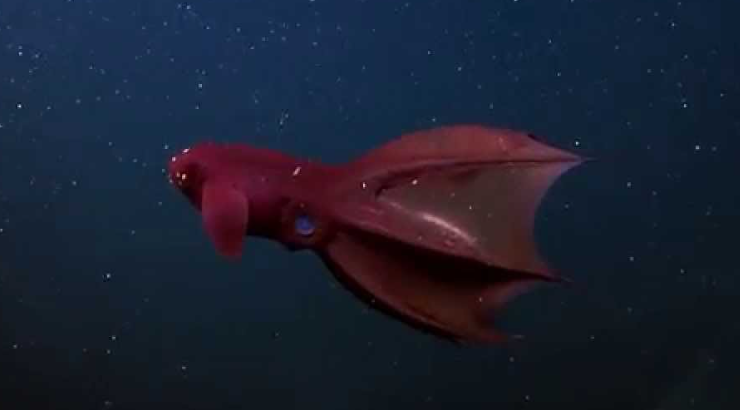
YouTube
Despite its name, the vampire squid (Vampyroteuthis infernalis) isn’t actually a squid or a vampire. It’s a cephalopod that lives in oxygen-poor waters where few creatures can survive. With large, red eyes, a cloak-like web connecting its arms, and a bioluminescent glow, this creature looks straight out of a gothic horror novel. The vampire squid survives by feeding on detritus and plankton, using its unique feeding tentacles to capture small organic matter from the water. Its eerie appearance and lifestyle make it one of the ocean’s most unique creatures.
4. Goblin Shark
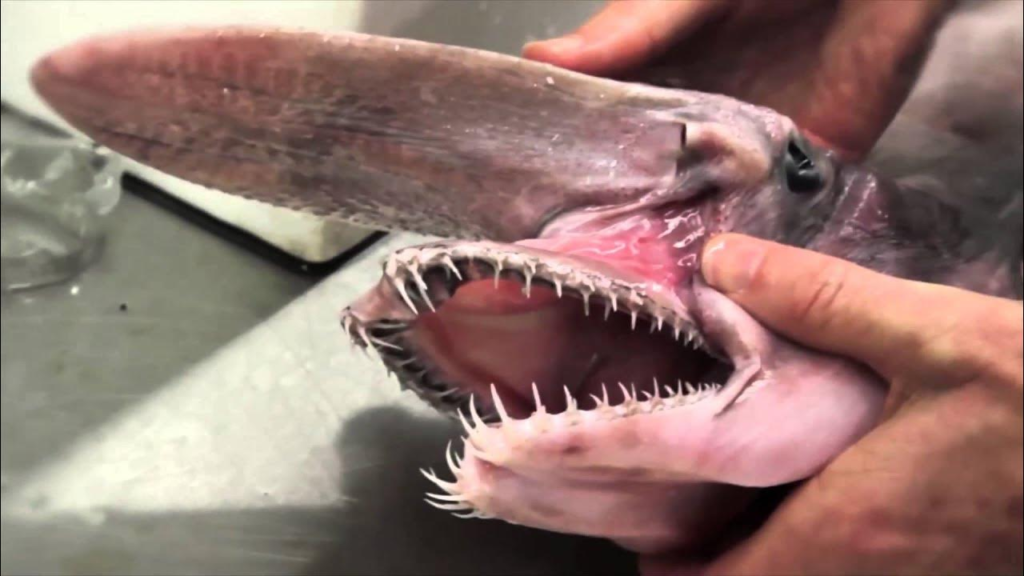
YouTube
Sometimes called the “living fossil,” the goblin shark has a long, flat snout that resembles a goblin’s nose. This shark, which can be found at depths of around 100 meters, uses its unique, extendable jaw to snatch up prey. The goblin shark’s pinkish hue and odd shape make it look more like an alien than a traditional shark. This shark spends most of its time in deep water, rarely seen by humans, and only emerges to hunt for small fish and squid.
5. Deep Sea Jellyfish

YouTube
Deep-sea jellyfish are some of the most bizarre creatures in the ocean, with their translucent, gelatinous bodies and long, trailing tentacles. These jellyfish are often bioluminescent, emitting a glowing light in the darkness of the deep. Their ability to produce light helps them navigate the abyssal depths and attract prey. Some species of deep-sea jellyfish can grow to enormous sizes, and their delicate bodies make them look almost ethereal, as if they’re drifting through another world.
6. Dumbo Octopus
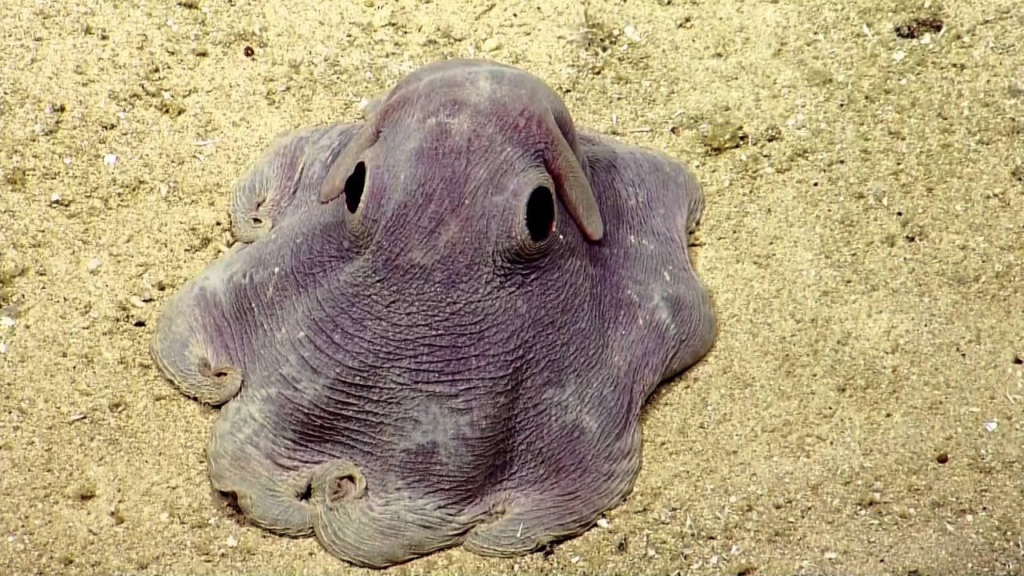
YouTube
Named for its large, ear-like fins that resemble Disney’s Dumbo the elephant, the Dumbo octopus is a small, soft-bodied cephalopod that lives at depths of over 7,000 feet. Unlike other octopuses, the Dumbo octopus doesn’t have a hard shell and instead relies on its elastic, bulbous body for protection. These octopuses are masters of camouflage, using their color-changing abilities to blend into the deep-sea environment. Their charm and unusual appearance have made them a favorite among marine enthusiasts.
7. Deep Sea Dragonfish
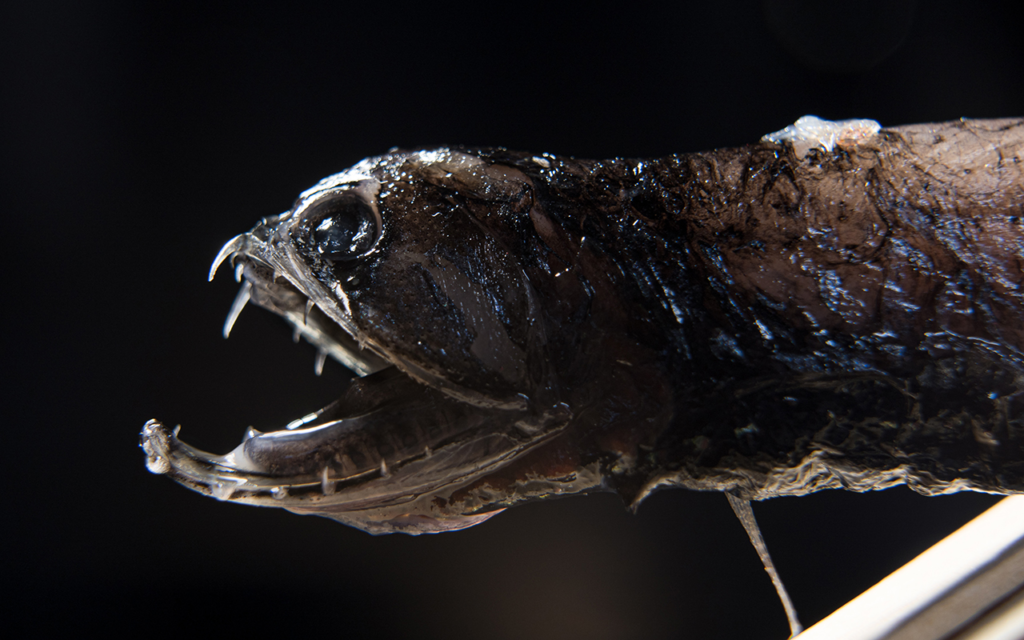
Jacobs School of Engineering – David Baillot
The deep sea dragonfish is one of the most terrifying-looking creatures lurking in the ocean’s depths. With its large, fang-like teeth, glowing barbel beneath its chin, and bioluminescent skin, it looks straight out of a fantasy novel. Found in the abyssal depths of the Atlantic and Pacific Oceans, this fish has adapted to survive in the pitch-black waters, using its bioluminescent abilities to attract prey and communicate with others of its kind. The glowing lure is used to entice smaller fish and invertebrates, which are then captured by the dragonfish’s massive jaws. Despite its fearsome appearance, the dragonfish is quite small, usually only reaching about 6 inches in length, but its ability to generate light and prey on anything that ventures too close makes it one of the deep ocean’s most unsettling creatures.
8. Zombie Worms

YouTube
Zombie worms, also known as osedax, live on the bones of dead marine animals, feeding on the nutrients inside. They have no mouths, so they use a specialized secretion to dissolve the bones and extract the nutrients. These worms can survive in extreme conditions, such as around hydrothermal vents, where most creatures would perish. Their ability to thrive on the bones of creatures long dead makes them both fascinating and a little eerie, as they seem to defy the usual rules of life and death in the ocean.
9. Anglerfish

Wikimedia Commons
One of the most famous deep-sea creatures, the anglerfish is known for its bioluminescent lure, which hangs above its head like a glowing fishing rod. The light attracts unsuspecting prey, which is then snapped up by the anglerfish’s massive jaws. With its enormous mouth, sharp teeth, and comically large eyes, this fish is a true deep-sea oddity. Found at depths of over 2,000 feet, anglerfish are masters of survival in an environment where food is scarce, and everything seems out to get you.
10. Whipnose Anglerfish
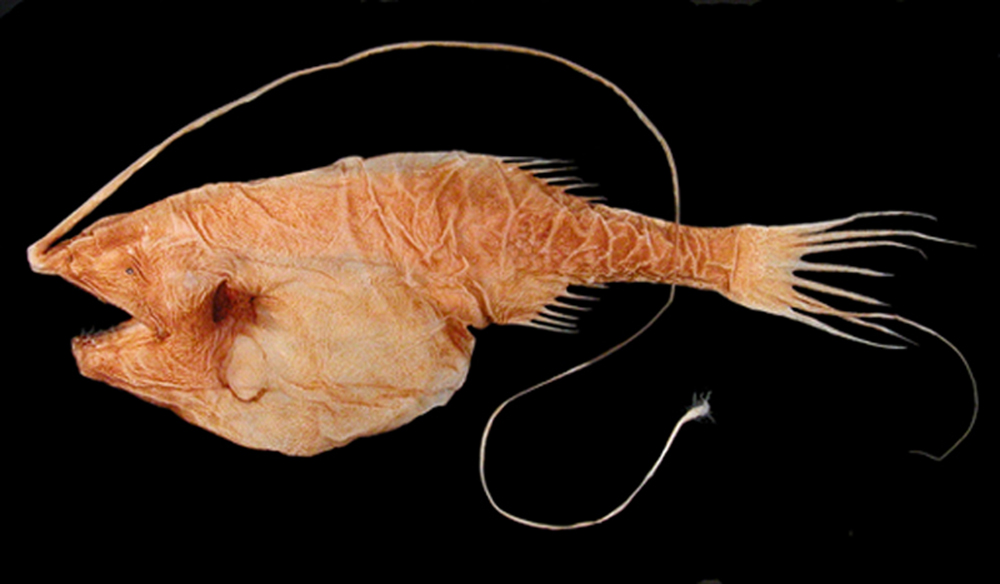
Wikimedia Commons
This anglerfish is distinguished by the long, whip-like structure that grows from its head, resembling a thin rod. Like other anglerfish, the whipnose uses bioluminescence to attract prey in the dark depths of the ocean. Its extended lure can sway in the currents, mimicking the movement of smaller creatures, which draws prey in close. Once within range, the whipnose uses its large mouth to snatch up the unsuspecting victim. Its strange, elongated lure makes it one of the more bizarre creatures in the ocean’s depths.
11. Spookfish

Animalia
The spookfish is an unusual creature capable of seeing in both air and water, thanks to its unique, dual-lensed eyes. These fish, which are found in deep waters, have evolved eyes that can adjust their focus for different environments, providing them with an unparalleled ability to navigate both the ocean and the surface. The spookfish’s extraordinary vision is a result of its ability to bend light in a way that most other animals cannot, making it an exceptional predator in the deep-sea ecosystem.
12. Lasiancistrus
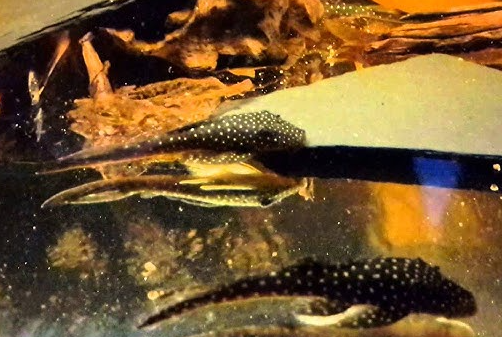
YouTube
The lasiancistrus is a species of catfish that lives at extreme depths in the Amazon River. This catfish has an unusual look, with a long, spiny body and a unique ability to breathe air. What makes it even stranger is its diet—it feeds on the biofilm that covers rocks and other surfaces in the river. These catfish use their specialized mouths to scrape off the film, making them an essential part of the river’s ecosystem. Their ability to thrive in such harsh conditions makes them one of the deep’s weirdest residents.
13. Hatchetfish

Animalia
Hatchetfish are tiny, bioluminescent fish that have a body shaped like a hatchet, giving them their name. They are found in the deep ocean and are known for their striking ability to produce light, which they use to attract prey and communicate with other hatchetfish. Their reflective skin allows them to blend into their surroundings, making them nearly invisible to predators. Despite their small size, they are well adapted to survive in the dark depths of the ocean.
14. Giant Squid

YouTube
The giant squid is a creature of legend, often depicted in stories of monstrous sea creatures, and for good reason. These enormous mollusks can grow up to 40 feet long, with eyes the size of basketballs. While they are elusive and rarely seen by humans, their tentacles are equipped with suction cups that can grasp prey with tremendous force. The giant squid lives in the deep ocean, where it hunts for fish and other creatures. Despite their size and fame, much about their life remains a mystery, adding to their air of intrigue.
15. Barreleye Fish
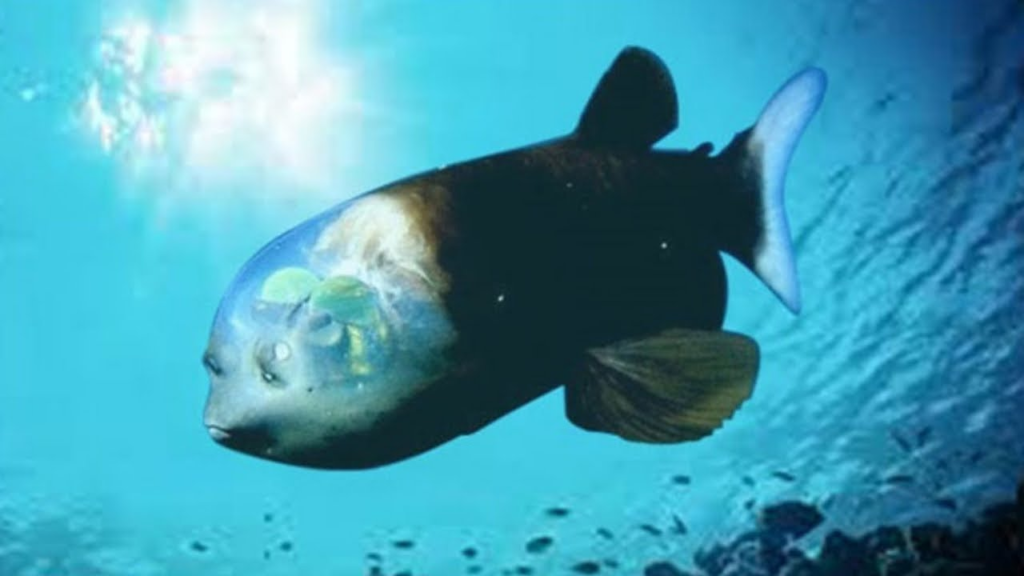
YouTube
The barreleye fish is a truly bizarre creature, thanks to its transparent head and tubular eyes that point upward. This fish has evolved to look upward, giving it an advantage when hunting for prey above. Its clear head allows it to see prey without being noticed, making it a stealthy predator. The barreleye’s eyes can rotate within its transparent skull, allowing it to track the movement of prey and avoid predators in the deep, dark waters where it lives.
16. Cusk Eel

Flickr
The cusk eel is an oddball of the deep sea, with a long, slender body and a large, fleshy head. It dwells at depths of over 9,000 feet, where it feeds on small fish and invertebrates. Unlike other eels, the cusk eel has a unique method of locomotion, using its long, flexible body to crawl along the ocean floor rather than swimming. Its strange body structure and its ability to thrive in such harsh conditions make it one of the most intriguing creatures of the deep sea.


